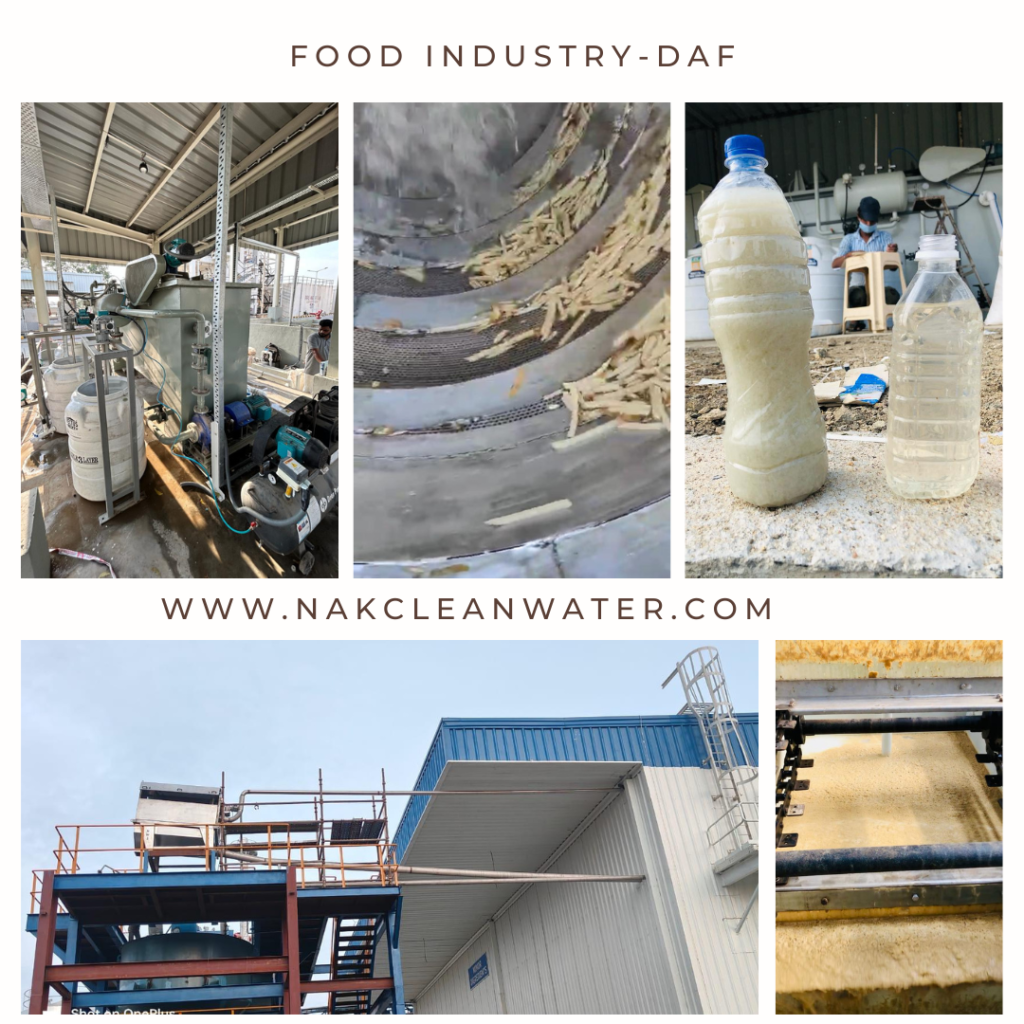
Please take note of the following information regarding the production of various food items and the treatment of wastewater generated during the process:
Raw materials used in the production of food products include
- White flour,
- Vegetable, palm, and olive oils,
- Potato starch,
- Dairy products,
- Seeds,
- Sugar,
- Salt, masala, and
- Yeast.
During production, a significant quantity of wastewater is generated, containing solid particles ranging from 0.2 to 25 mm in size, along with high levels of floating and emulsified oil, and organic contaminants.
The wastewater from this industry can contain contaminants with varying concentrations, typically characterized by the following average values:
COD: 1000-3000 PPM
BOD: 400-1000 PPM
OIL: 50-1000 PPM
Wastewater treatment for industrial food production typically involves three main stages: separation of suspended solids, biological treatment for removal of biodegradable organic compounds, and tertiary treatment for producing treated effluents suitable for reuse.
Biological treatments, such as aerobic and anaerobic treatments, are commonly used for eliminating biodegradable organic compounds. Aerobic treatments, including processes like biological oxidation and MBBR, are particularly effective for reducing pollutant loads, especially nitrogen concentrations. Secondary treatment is often sufficient for meeting discharge limits, while tertiary treatments, such as membrane filtration technologies, are employed for water reuse and recycling purposes.
Additionally, both primary and secondary treatment sludge can be recovered for reuse, utilizing technologies like
- mechanical pre-screening,
- biological treatment,
- sludge thickeners,
- vacuum concentration, and
- anaerobic digesters for energy production
Function of DAF systems
Dissolved air flotation (DAF) is used during the primary treatment of wastewater produced by the food & fry industry.
It is a very efficient process for the removal of suspended solids, grease, oil and other pollutants present in this type of effluent.
These are the stages that take place during primary treatment by dissolved air flotation:
- Effluent conditioning: Before being subjected to flotation, the effluent is screened to remove larger solids, and others that may cause mechanical problems in the DAF equipment installation. For this purpose, systems such as screens, grids, grease traps, etc. are used.
- Air microbubble generation: The DAF process involves the dissolution of pressurized air in the treated effluent flow out of the equipment, which is recirculated to the inlet. The air is supplied in a contact balloon or saturator.
- Mixing and contact: The mixing of the air microbubbles with the effluent occurs homogeneously in the contact chamber of the DAF.
- Flotation and separation of suspended solids: The mixture of air and contaminants present in the water is conveyed to a flotation chamber, where the previously coagulated and flocculated particles are separated and rise, as they are less dense, to the surface of the tank, where they form a layer of foam that is collected by a skimmer system.
A DAF system offers a number of important advantages compared to other primary treatment technologies for wastewater from industrial food production:
- High efficiency in the separation of suspended solids, oils and grease.
- It can operate with variable effluent loads and compositions.
- They require less space than alternative treatments.
- They allow continuous and automated operation, thus reducing human intervention in their operation.
- They facilitate the recovery of reusable materials for the production of by-products.
DAF systems are also often used after the biodegradation treatment of dissolved contaminants in the secondary treatment of effluents. The flotation process is often used instead of secondary settling clarifier tanks, due to the advantages mentioned above.
Conclusion
The production of packaged food generates wastewater that can be a significant source of pollution if not properly managed. This wastewater contains a variety of contaminants, such as fats, oils, greases, carbohydrates, and other organic compounds, which require treatment before discharge into the environment.
A pre-screening is essential before the system to eliminate all types of large loads containing high TSS value. If not removed, these can cause problems in further systems such as clogging the pump, producing a strong smell, and lowering water quality at the outlet. Proper screening before the ETP Plant can help save on plant operational maintenance.
Dissolved air flotation is considered the best option for the primary treatment of these wastewaters, thanks to its efficiency in removing suspended and fatty contaminants..
By providing effective separation of contaminants prior to entering treatment processes, DAF flotation contributes to the improvement of final effluent quality and compliance with environmental and regulatory standards.
